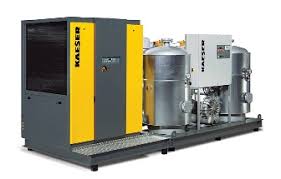
An Introduction to Combination Refrigerated/Desiccant Compressed Air Dryers
Desiccant dryers are commonly used to bring the pressure dew point well below freezing (commonly -40°F) in order to prevent moisture from precipitating in the compressed air system and production equipment. In most cases, the need is actually seasonal and a refrigerated dryer is perfectly capable of meeting air quality needs for most of the year – and with much lower operating and maintenance costs. It is possible to install separate refrigerated and desiccant dryers in series for these applications. Better still are combination or “hybrid” dryer systems that combine dryer technologies into a high performing dryer with even lower operating costs.
Lower Total Lifetime Costs
No conventional desiccant system comes close to Hybritec dryers when it comes to lowest total life cycle costs. This is mainly due to Hybritec’s lower energy consumption and the fact that these versatile dryers become even more cost-effective as energy prices increase. Hybritec dryers also require less maintenance – further reducing their cost of ownership.
Consistent drying performance
- Consistent outlet dew point and air temperature.
- There are no spikes at any time during the drying or regeneration cycle. (In fact, it will deliver outlet dew points exceeding the -40°F design when ambient conditions are less taxing than design conditions.)
- Significantly outperform desiccant dryers when inlet temperatures are above rated conditions.
Superior energy efficiency
If your need to provide cold weather protection for your air system is seasonal, Hybritec’s energy advantages are clear. With an assumed frost period of 4 months per year, for example, it is possible to reduce energy costs as much as 2/3. Even if you need a -40°F dew point year-round, Hybritec still offers nearly 50% savings and more consistent dew points
Low maintenance costs
Reducing the thermal and mechanical demands on the Hybritec’s desiccant dryer not only significantly extends desiccant service life, but also reduces the amount of desiccant material required. Valves last longer due to 50 to 99% less valve cycling.






